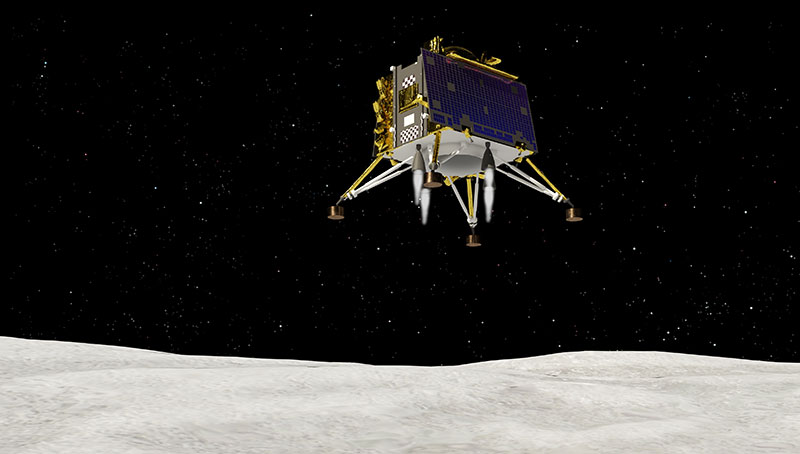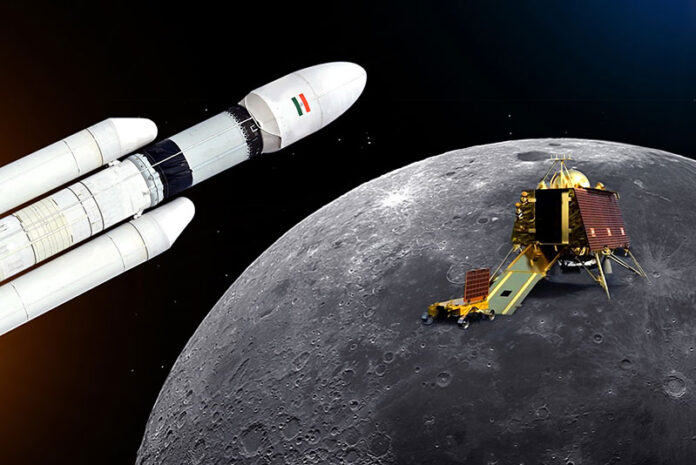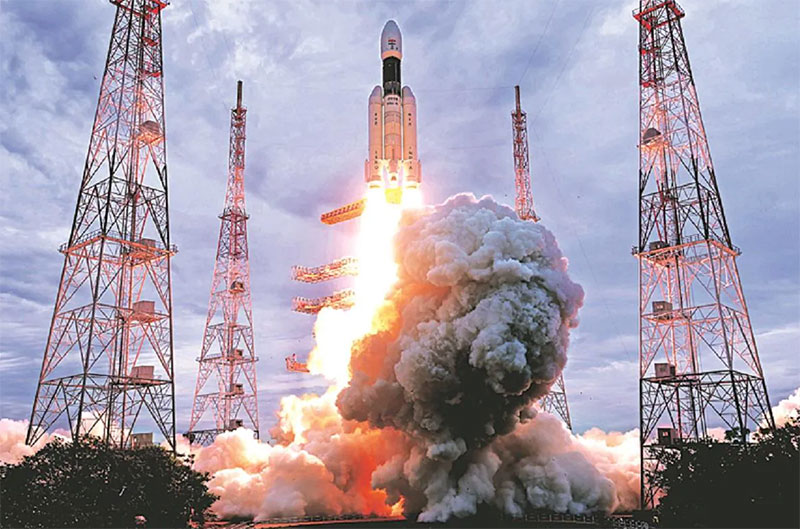THE TIMES KUWAIT REPORT
India’s ambitious endeavor to safely land a spacecraft on the Moon and conduct scientific experiments on the lunar surface reached its apogee on 23 August, when the lunar-landing module from the Chandrayaan-3 mission made a successful touchdown on the lunar surface.
The historic moon landing by India’s space agency, the Indian Space Research Organization (ISRO), placed the country alongside only three other nations — the United States, Russia, and China — to successfully land a spacecraft on the Moon. India also entered the record books for being the first country to soft-land a spacecraft on the uncharted southern polar region of the Moon.
As the lunar landing module from Chandrayaan-3 successfully touched down on lunar soil on Wednesday, billions of people from all walks of life across India and globally who were watching onscreen the much-awaited moment applauded and cheered loudly, and spontaneous celebrations broke out across the country.
Prime Minister Narendra Modi, who was in Johannesburg, South Africa, attending the 15th BRICS Summit, and was monitoring the live telecast, waved the national tricolor on witnessing the successful touchdown. In his congratulatory message to the ISRO team and to Indians everywhere, the premier proudly stated, “India is now on the Moon”.
“When we see such history being made before our eyes, life becomes blessed. Such historical events become the eternal consciousness of a nation’s life. This moment is unprecedented, it is unforgettable, it is the triumph of the new India,” said the Indian prime minister.”This moment is about crossing the ocean of difficulties, this moment holds the capability of 1.4 billion hearts, it signifies a new energy, new belief, and new consciousness in India.
“This moment is the call of India’s ascending destiny. Through the hard work and talent of our scientists, India has reached the polar region of the Moon which no other country in the world has ever reached. India’s successful Moon mission is not just a success of India alone… this success belongs to all of humanity,” the Indian premier stated.
A timeline of the space-faring craft’s 40-day journey to the Moon shows that the spacecraft was launched from the Satish Dhawan Space Centre in Andhra Pradesh’s Sriharikota on 14 July. The ISRO’s heavy-lift vehicle, the 44-meter Geosynchronous Satellite Launch Vehicle (GSLV) Mark 3 (LVM 3) was used for launching the spacecraft in orbit above Earth.
Following its successful release, the upper stage of the LVM3, powered by India’s most powerful C20 cryogenic engine, entered into lunar orbit on 5 August. A series of orbital maneuvers then took the spacecraft ever closer to the moon. On 17 August, India’s moon mission marked another milestone when the ‘Vikram’ lander module — named after Vikram Sarabhai (1919–1971), who is widely regarded as the father of the Indian space program — successfully separated from the propulsion module.
The technically challenging two-phase deboosting of the lander module was then undertaken to slow down and position the lander close to its landing site. The final descent of Vikram for its historic soft-landing rendezvous with the lunar surface was successfully achieved, precisely as planned, at 18:04 Indian Standard Time (+5:30 Universal Mean Time) on 23 August.
The first part of the stated objectives of India’s Chandrayaan-3 mission, to safely soft-land on the lunar surface, and to roll out its payload, the ‘Pragyan’ lunar-rover, down the ramp onto the lunar soil, have now been completed flawlessly. Over the next two weeks, equivalent to one lunar day, the self-propelled Pragyaan will travel over 500 meters across the lunar surface conducting in-situ scientific experiments.
 Historically, other spacecraft missions to the Moon have mainly targeted the equatorial region due to its more favorable terrain and operating conditions. However, the Chandrayaan-3 mission of landing and exploring the uncharted terrain along the 69th latitude of the Moon’s southern polar region, presents a vastly different and more challenging prospect.
Historically, other spacecraft missions to the Moon have mainly targeted the equatorial region due to its more favorable terrain and operating conditions. However, the Chandrayaan-3 mission of landing and exploring the uncharted terrain along the 69th latitude of the Moon’s southern polar region, presents a vastly different and more challenging prospect.
The probing studies to be conducted over the hitherto unexplored southern region have the potential to reveal entirely new facets of lunar geology and seismic activity. The new findings will hopefully contribute to a deeper understanding of the Moon’s evolution, its connection to Earth, and also help to augment human knowledge for future space explorations.
The successful lunar landing on Wednesday was met with jubilation at ISRO’s headquarters. The ISRO Chief S. Somanath extended his gratitude to the space-agency team and to well-wishers everywhere for their unwavering support and dedication to the Chandrayaan-3 project. Reflecting on the journey, he emphasized the invaluable lessons learned from previous setbacks had ultimately paved the way for Wednesday’s triumph. “Thank you everyone for the support… We learned a lot from our failure and today we succeeded,” said the space agency chief.
The country’s first lunar mission, Chandrayaan-1 was launched in October 2008 and operated until August 2009. The mission included an orbiter and a Moon Impact Probe that made a controlled impact with the lunar surface on 14 November 2008. The second lunar mission in July 2019 was only ‘partially successful’ as the lunar lander deviated from its trajectory due to a software glitch, when it was barely 2 km above the moon’s surface on 6 September 2019, and crash landed on the lunar surface.
Amazingly, earlier this week, the ISRO was able to successfully establish two-way communication between Chandrayaan-3 lander module and the Chandrayaan-2 space-craft that still orbits around the moon. To stamp India’s entry into the elite group of nations that have so far landed on the Moon, the rear wheels of the lunar rover will leave behind imprints of India’s national emblem and the ISRO logo as it moves on the lunar surface.
The successful landing sends an emphatic message to young people all over the world that the pursuit of knowledge is a life-long journey filled with infinite possibilities. The success of Mission Chandrayaan-3 and the image of a Vikram lander, as it made its nail-biting descent and its momentous touchdown on lunar surface, will hopefully ignite the imagination of young minds everywhere, encourage them to think boldly, dare them to dream big, and to dedicate their energies to the pursuit of knowledge.
The journey of Chandrayaan-3, from its fiery blast-off to its triumphant landing on the Moon’s southern polar region opens up exciting possibilities for further lunar exploration, scientific discoveries, and international collaboration in exploring the final frontier. The Chandrayaan mission is also an attestation of human ingenuity, innovation, and the unquenchable human thirst for new knowledge. The success of India’s mission is, as Prime Minister Modi put it, a triumph for all of humanity.


















